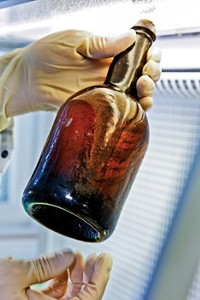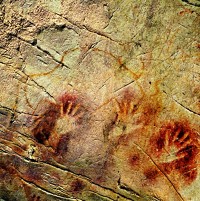Advertisement
Grab your lab coat. Let's get started
Welcome!
Welcome!
Create an account below to get 6 C&EN articles per month, receive newsletters and more - all free.
It seems this is your first time logging in online. Please enter the following information to continue.
As an ACS member you automatically get access to this site. All we need is few more details to create your reading experience.
Not you? Sign in with a different account.
Not you? Sign in with a different account.
ERROR 1
ERROR 1
ERROR 2
ERROR 2
ERROR 2
ERROR 2
ERROR 2
Password and Confirm password must match.
If you have an ACS member number, please enter it here so we can link this account to your membership. (optional)
ERROR 2
ACS values your privacy. By submitting your information, you are gaining access to C&EN and subscribing to our weekly newsletter. We use the information you provide to make your reading experience better, and we will never sell your data to third party members.
Analytical Chemistry
Traces Of Tobacco In Mayan Pottery
Mass spec analysis reveals nicotine residue in 1,300-year-old pot
by Sarah Everts
January 23, 2012
| A version of this story appeared in
Volume 90, Issue 4
Researchers studying a Mayan pot from approximately A.D. 700 discovered traces of nicotine inside, the first physical evidence of possible tobacco use by the ancient civilization. Staff at the Library of Congress, where the pot is housed, might have been tempted to guess that tobacco was indeed stored in that pot, as indicated by the Mayan script on the container. But there have been many cases in which the inscription on the outside of a vessel does not match what’s inside—sometimes intentionally so, as is the case with some artifacts used in Mayan rituals. So Jennifer A. Loughmiller-Newman, an anthropologist at the State University of New York, Albany, teamed up with Dmitri V. Zagorevski, a chemist at Rensselaer Polytechnic Institute, to use mass spectrometry to identify the trace contents at the base of the vessel (Rapid Commun. Mass Spectrom., DOI: 10.1002/rcm.5339). They were lucky that the residues had not degraded over the past 1,300 years and that the pot hadn’t been filled with iron oxide, a common burial material that would have interfered with the nicotine signal. This is only the second case to date in which packaging information on Mayan artifacts accurately matches the contents. The first example dates back to 1989, when scientists found traces of cacao in a container from Guatemala.





Join the conversation
Contact the reporter
Submit a Letter to the Editor for publication
Engage with us on Twitter